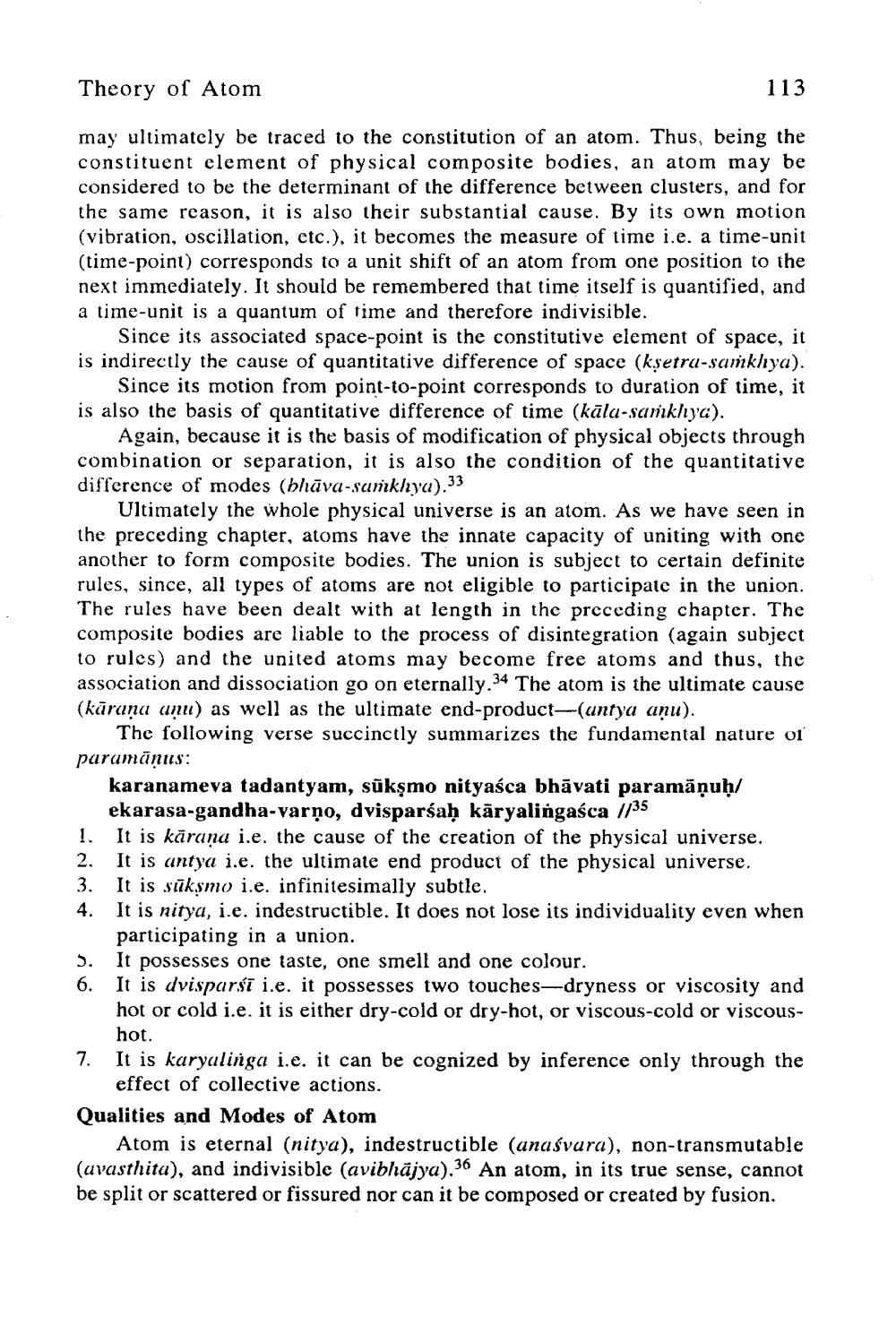________________
Theory of Atom
may ultimately be traced to the constitution of an atom. Thus, being the constituent element of physical composite bodies, an atom may be considered to be the determinant of the difference between clusters, and for the same reason, it is also their substantial cause. By its own motion (vibration, oscillation, etc.), it becomes the measure of time i.e. a time-unit (time-point) corresponds to a unit shift of an atom from one position to the next immediately. It should be remembered that time itself is quantified, and a time-unit is a quantum of time and therefore indivisible.
Since its associated space-point is the constitutive element of space, it is indirectly the cause of quantitative difference of space (kṣetra-samkhya). Since its motion from point-to-point corresponds to duration of time, it is also the basis of quantitative difference of time (kāla-samkhya).
Again, because it is the basis of modification of physical objects through combination or separation, it is also the condition of the quantitative difference of modes (bhāva-samkhya),33
Ultimately the whole physical universe is an atom. As we have seen in the preceding chapter, atoms have the innate capacity of uniting with one another to form composite bodies. The union is subject to certain definite rules, since, all types of atoms are not eligible to participate in the union. The rules have been dealt with at length in the preceding chapter. The composite bodies are liable to the process of disintegration (again subject to rules) and the united atoms may become free atoms and thus, the association and dissociation go on eternally.34 The atom is the ultimate cause (kāraṇa aņu) as well as the ultimate end-product-(antya aņu).
The following verse succinctly summarizes the fundamental nature of paramāņus:
karanameva tadantyam, sükṣmo nityaśca bhāvati paramāņuḥ/ ekarasa-gandha-varņo, dvisparśaḥ kāryalingaśca //35
113
1.
It is kāraṇa i.e. the cause of the creation of the physical universe. It is antya i.e. the ultimate end product of the physical universe. 3. It is sūkṣmo i.e. infinitesimally subtle.
2.
4. It is nitya, i.e. indestructible. It does not lose its individuality even when participating in a union.
5. It possesses one taste, one smell and one colour.
6. It is dvisparsī i.e. it possesses two touches-dryness or viscosity and hot or cold i.e. it is either dry-cold or dry-hot, or viscous-cold or viscoushot.
7.
It is karyalinga i.e. it can be cognized by inference only through the effect of collective actions.
Qualities and Modes of Atom
Atom is eternal (nitya), indestructible (anaśvara), non-transmutable (avasthita), and indivisible (avibhājya).36 An atom, in its true sense, cannot be split or scattered or fissured nor can it be composed or created by fusion.




